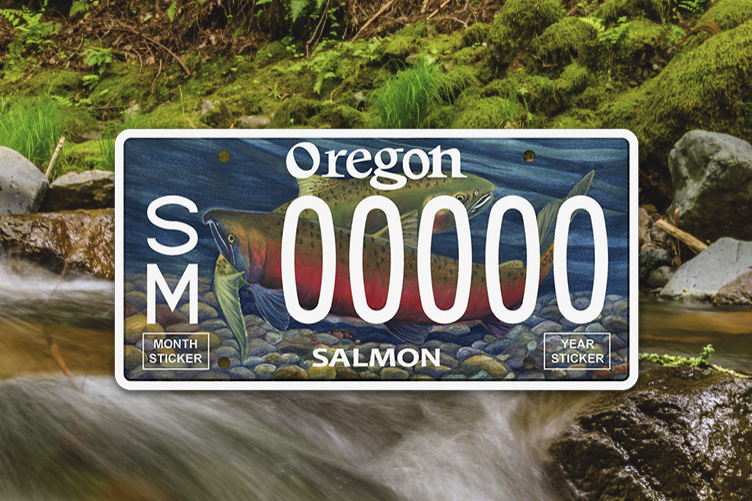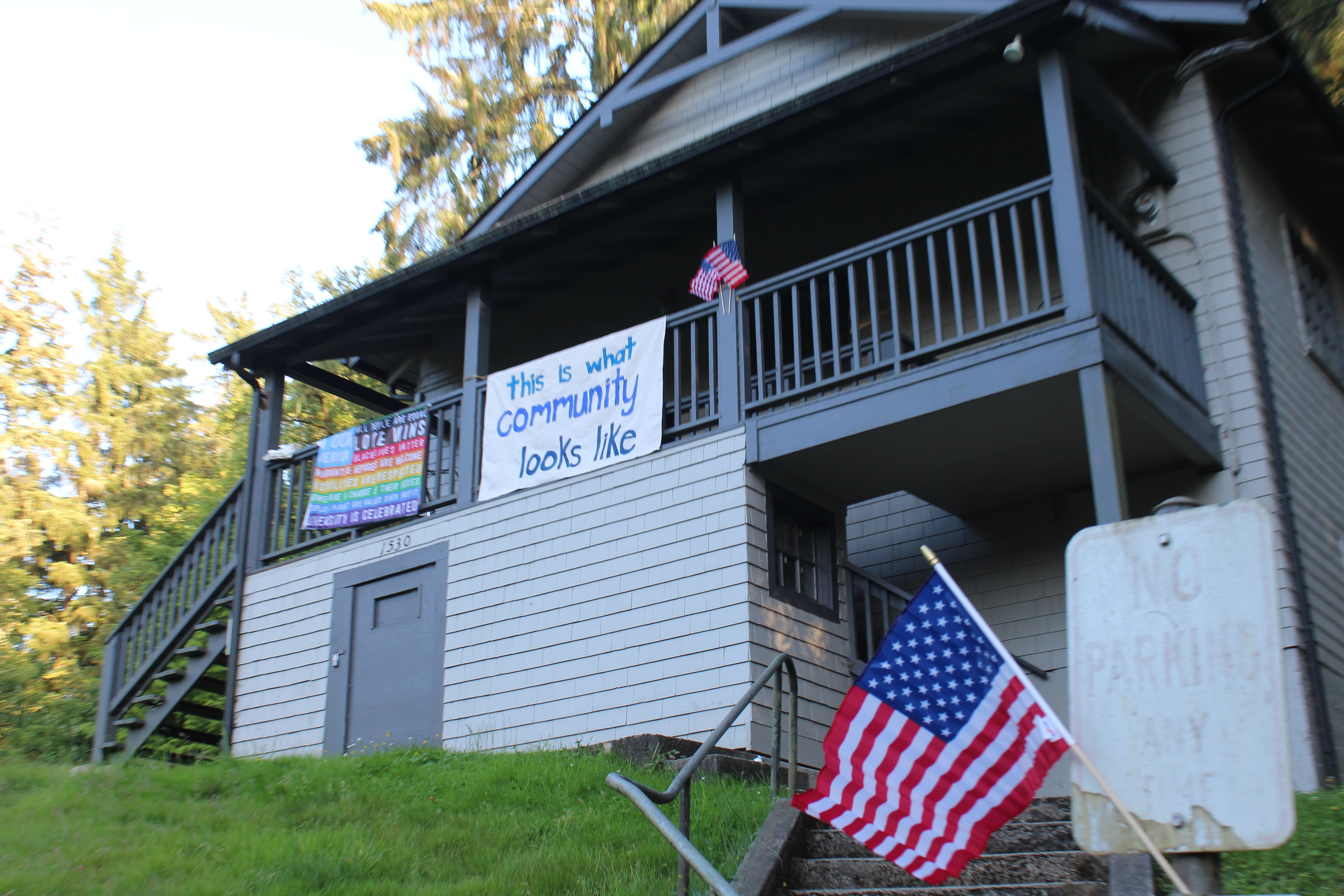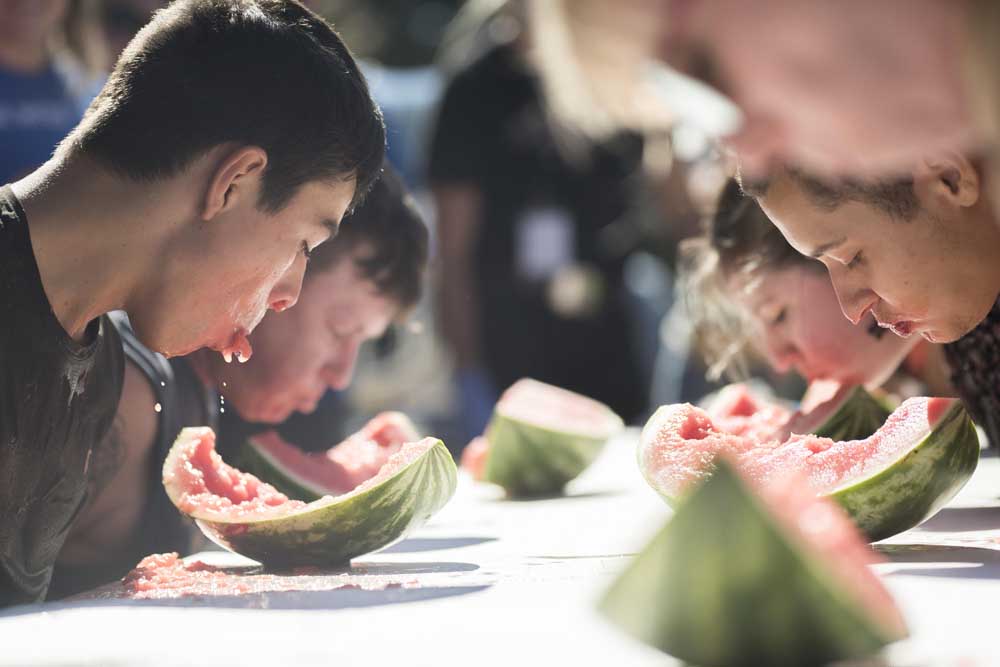Necanicum Watershed Council gets grant to support salmon habitat restoration
Published 9:00 am Thursday, May 15, 2025

- Revenues from Oregon salmon license plates go to the Oregon Watershed Enhancement Board and the Oregon Parks and Recreation Department to support restoration projects benefiting salmon. (State of Oregon photo.)
On Oregon’s North Coast, a new grant of more than $65,000 is paving the way for habitat restoration south of Seaside.
Across the state, drivers can pay an extra fee to put salmon license plates on their vehicles. Those revenues then go to the Oregon Watershed Enhancement Board and the Oregon Parks and Recreation Department to support restoration projects benefiting salmon. The program has been around for well over two decades — but in April, the Necanicum Watershed Council was selected by the Oregon Watershed Enhancement Board to receive funding for the first time in its history for a project at Grindy Creek.
Djennyfer de Melo Ferreira, the nonprofit’s stewardship and restoration director, said one of the main reasons for choosing the site for a restoration project was its high number of coho salmon, which are listed as threatened under the federal Endangered Species Act. The plan is to partner with the Chinook Indian Nation and Nuveen Natural Capital to remove two undersized culverts and fully decommission two unused roads, improving access to around 1.7 miles of upstream fish habitat.
Trending
The work is set to begin this summer. In addition to removing fish passage barriers, the nonprofit will also add woody debris to the creek to create new pockets of habitat, and plant native plants like willow, western red cedar and salmonberry along the streambank.
“All of those things put together as a package improve habitat for salmon,” said Eric Williams, the Oregon Watershed Enhancement Board’s restoration grants manager.
Williams said projects like the one planned at Grindy Creek play an important role in supporting coho salmon populations — but they can also support local contractors and employees.
“I think it’s important for people to know that when they do decide to put salmon plates on their car, that the money is going right into habitat improvement for the benefit of the fish,” he said. “Because I think a lot of times, you’re driving around, you see the different license plates Oregon has, and I know I often wonder, for the many plates that are out there, ‘Where does that money go?’ And in this case, it really is putting work on the ground.”
Every six months, the board receives dozens of grant applications from organizations statewide. In this most recent funding cycle, it awarded 66 grants totaling more than $18 million for projects focused on fish and wildlife habitat and water quality improvement, funded by the Oregon Lottery and other state and federal sources. On top of the license plate grant — one of two awarded in April — the Necanicum Watershed Council also received two grants from that pot.
One of the grants — a $215,034 award — will fund similar restoration efforts starting this summer at Johnson Creek south of Seaside, removing a culvert to open up roughly 3 miles of fish habitat. Meanwhile, a $187,603 technical assistance grant will help support the early stages for a project at Thompson Creek north of Seaside. The work will include an engagement process with landowners and community partners and site assessments to determine future phases of design and restoration.
Trending
While this is the first time the nonprofit has received a salmon license plate grant, Operations Director Sarah Walker said it’s also likely the first time in recent memory that it has received three grants in a single funding cycle. At the same time, the watershed council has seen other promising growth, recently tripling its staff capacity.
“Getting the three grants, I think it just shows the work we’re doing and how we’re getting trusted to improve the Necanicum Basin,” de Melo Ferreira said.









